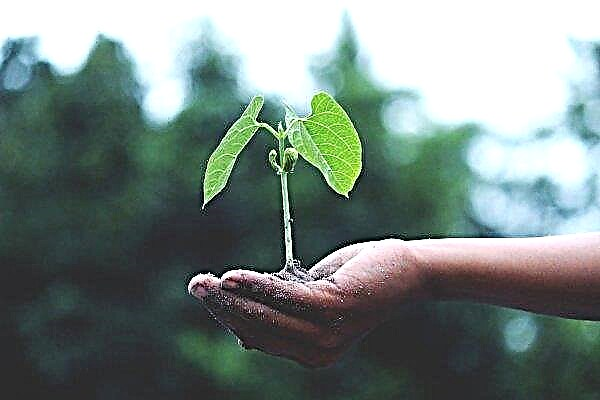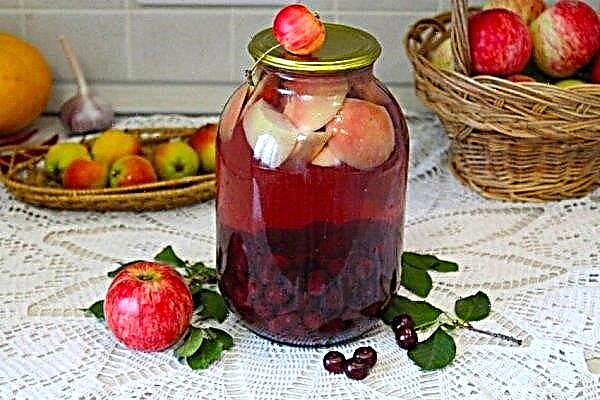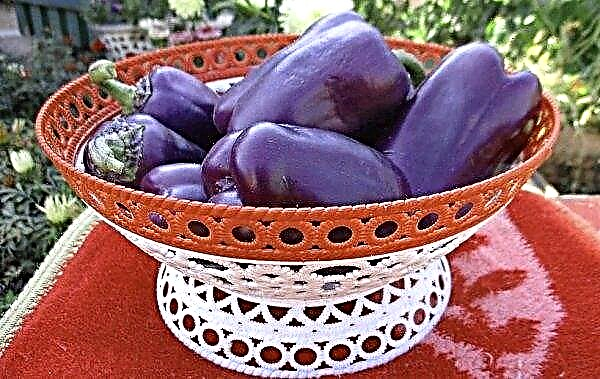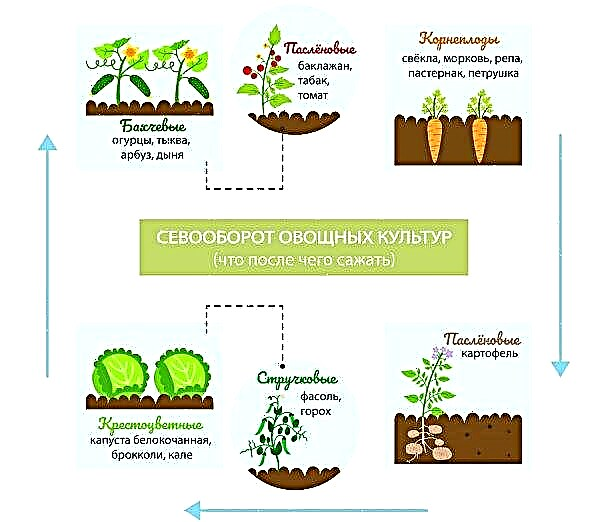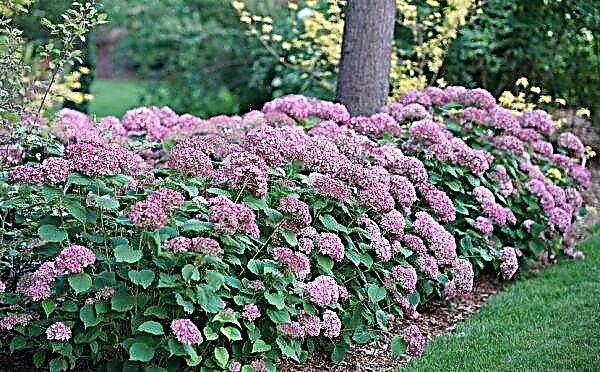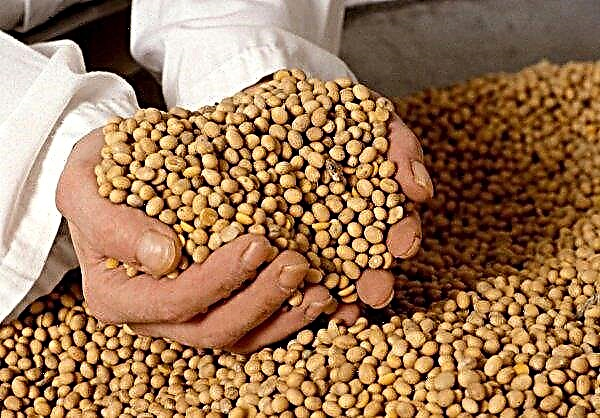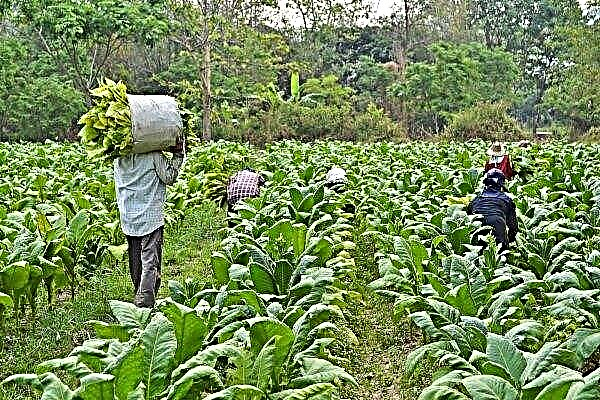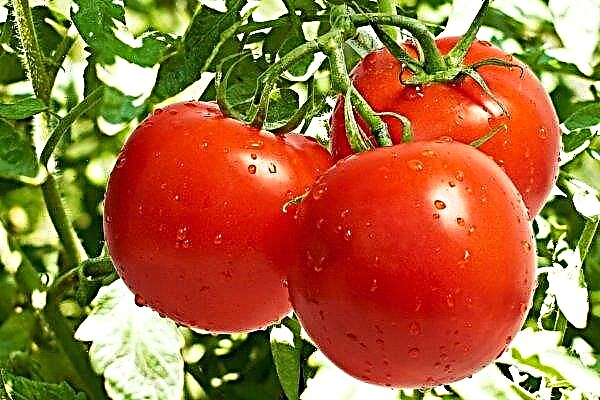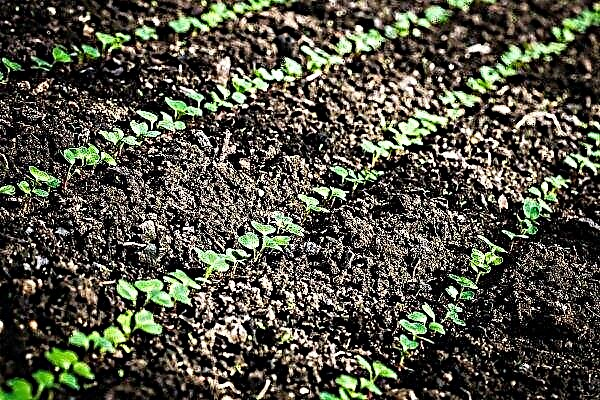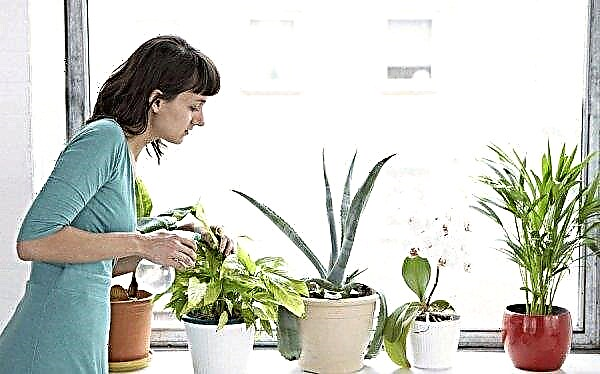Pepper Flight is better known among professional agronomists who grow bell peppers for sale. The view is a success in the market due to its excellent external qualities and good durability. Read more about the qualities of this culture, as well as about the features of its cultivation, read in this article.
History and description of the variety
We will first get acquainted with the history of pepper, and also consider the varietal characteristics inherent in it.
Selection
Variety Flight was created in the 90s. XX century Moldovan scientists-breeders Panchev Yu. I. and Ilyenko T. S., who are employees of the scientific center NIITSSSSA, located in Moldova, invented the culture.
Did you know? Chocolate and bell pepper have common properties. Both of them increase the concentration of endorphins (hormones of happiness) in the blood. Given the calorie content of chocolate, becoming “happy” with pepper is more profitable for a figure.
Fruit characterization
The fruits are conical in shape. The mass of one vegetable varies on average from 100 to 200 g. The surface is smooth. Ripe fruits are painted dark red, the taste is sweet, crispy, juicy with a bright pepper aroma.
Vegetable is used for the preparation of high-quality preservation and is used fresh.

Bush characteristic
Pepper Flight is a neat plant, in height not exceeding 40-50 cm. The shrub is medium-leafed. The shape of the leaf plates is oval, the color is dark green.
The ripening period is within 115–130 days. Productivity is 2-6 kg per 1 m².
Advantages and disadvantages
- Pepper Polet has many advantages that make it attractive for cultivation both on farms and in household plots:
- high yields;
- excellent commercial qualities of fruits and excellent pepper aroma;
- peppers are stored in a refrigerator for a long time;
- the fruits withstand long-distance transportation.
How to grow seedlings at home
Like most varieties of pepper, Flight is cultivated using seedlings. At home, growing young bushes is quite simple.
The timing
It’s worth sowing the seeds of the flight for seedlings in February, so that by the time of transplanting to an open bed the plants have time to grow stronger.

The soil
The soil should be light, well-drained. To give it lightness, you can add humus and sand. 1 kg of soil mixture needs 1 tbsp. l of wood ash.
Before sowing, the soil mixture must undergo a disinfection procedure. Treat it with a solution of potassium permanganate (1-2%), after which additional treatment with a biological preparation (Trichodermin or Planriz) is recommended. If the soil was taken from the garden, pour it with a fungicide solution (for example, “Fitosporin”).
Did you know? Bell pepper is actually not from Bulgaria. His homeland is America.
Capacity
Since the culture is very sensitive to diving, it is better to use peat glasses or tablets for sowing seeds for seedlings. Individual peat cups are very convenient because seedlings can be directly transplanted to an earthen plot.
Large containers can be dispensed with, given that the roots of the pepper develop poorly.
Seed selection and preparation
When buying seeds, look at the packaging. Pay attention to the manufacturer - give preference to a well-established company.
Seeds must undergo preliminary disinfection. Before planting, treat them with a solution of potassium permanganate. Additionally, you can use a growth stimulator (wood ash). Then the seed is immersed in hot water for several hours. After swelling, the seeds can be sprouted - wrap them in a damp cloth for two days.
Sowing seeds
Sowing is done in holes, the depth of which does not exceed 1 cm, after which the future seedlings are watered and covered with a film of polyethylene. The distance between the holes is 2-3 cm. In this form, the container with seeds is kept in a warm place (with a temperature of +23 ... + 24 ° С) until the first shoots appear.

Seedling Care
For faster sprouts, peppers need to create greenhouse conditions. The microclimate in the drawers should be moist and warm. For this purpose, cover containers with seedlings with plastic wrap. The seedlings also require a lot of light, so it is advisable to keep artificial lamps above them (at least 16-18 hours a day). The air temperature in the room should be at least +23 ... + 25 ° С. After the shoots reach 2-3 cm in length, remove the protective film, and also slightly reduce the consecration intensity and temperature.
The soil should always be airy and slightly moist.
If the seedlings grow in a common box, then in the phase of formation of several mature leaves, dive.
Important! It is necessary to dive carefully, so as not to damage the delicate root system. Be prepared for the fact that some bushes may not survive this procedure.
Seedling hardening
When all the seeds have germinated, they can be hardened - placed for 2 weeks in a cooler place, lowering the temperature to +16 ... + 18 ° C during the day and to +14 ... + 15 ° C at night. After hardening, the temperature can be raised by 5–7 degrees.
With the approaching time of planting bushes in the ground or in the greenhouse, seedlings are recommended to gradually accustom to external conditions - to take them outside. Thanks to this procedure, after planting the bushes will not get burns.
How to transplant seedlings to a permanent place
To obtain the maximum yield, peppers must be transplanted into the environment most comfortable for them, while observing the timing and technology of transplantation.

The timing
Transplant seedlings at the end of May (in the greenhouse two weeks earlier). Do not rush to disembark. It is better to wait for a stable warm outside temperature and warming the soil.
By the time of planting, the young bushes should grow stronger, reach the age of 70–80 days.
Seat selection and crop rotation
For the flight, loose loamy or sandy loamy fertile soil is suitable, but always without an excess of nitrogen. Suitable acidity for growing peppers is around 6.4 pH.
The landing site at the summer cottage should be necessarily sunny and at the same time reliably protected from winds and drafts.
It is worth making sure that groundwater or a large body of water do not lie nearby. With a high occurrence of groundwater, raise the bed above the ground to a height of 30–35 cm, fencing it with boards.
In order for the crop to be larger and the plants to be sick less, it is important to observe crop rotation. Peppers should not be planted in the same place for 3-4 years. In addition, pepper is not combined with other solanaceous (potatoes, tomatoes, eggplant). Never plant bitter peppers next to Flight - due to over-pollination, sweet peppers may acquire a bitter aftertaste.
The best precursors for pepper are: carrots, early cabbage, legumes (except beans) and perennial herbs.
Scheme and depth of landing
Landing Flight is carried out according to the following scheme:
- Before planting young plants, well moisten and nourish the land - fill the holes with wood ash, compost, mineral fertilizers.
- Place the wells according to the scheme 40 × 40 cm, moisten them.
- In order not to damage the bushes, transfer them to the soil using the transshipment technique, that is, pulling them out of the tank directly with an earthen lump.
Important! One of the typical mistakes of beginners — strong deepening of plants during transplantation. However, professionals recommend placing the pepper bush in a hole to a depth of not more than 1–3 cm
How to care for landings
After carrying out planting measures, the flight bushes require comprehensive care. Standard pepper care includes regular watering, fertilizing, and soil care.
Watering
Watering should be done at least twice a week using warm water. In the summer season, water the plantings systematically, but in moderation - excessive amounts of water harm the roots. The ideal type of irrigation for the presented variety is drip.

Soil care
To maintain moisture in the soil and improve air permeability, carry out its shallow (surface) loosening. Do not loosen deep so as not to touch the fragile rhizome. The procedure should be performed after rains or after each watering.
It is important to monitor the cleanliness of plantings and get rid of weeds in time.
To protect the soil from drying out and to prevent weeds from breaking through, mulch the soil around the bushes. The best mulch is ground grass, sawdust, hay.

Fertilizer application
After adapting the bushes, apply liquid fertilizers - infusions of grass, mullein, diluted with water. Additionally use phosphorus-potassium compounds, ash infusions.
Pepper bushes need to be fed three times:
- before blooming;
- after flowering;
- during fruit ripening.
Fertilize should be in moist soil.
Important! It is better not to use fresh manure as a top dressing, otherwise its effect will affect the taste characteristics of the fruit.
Bushes garter
Being short, Flight bushes do not need a garter.
Video: Harvesting pepper varieties flying on the field
As you can see, the characteristics of the Polet variety fully correspond to its high status among farmers. Peppers will delight you with their unpretentiousness, rich harvests and excellent taste.

